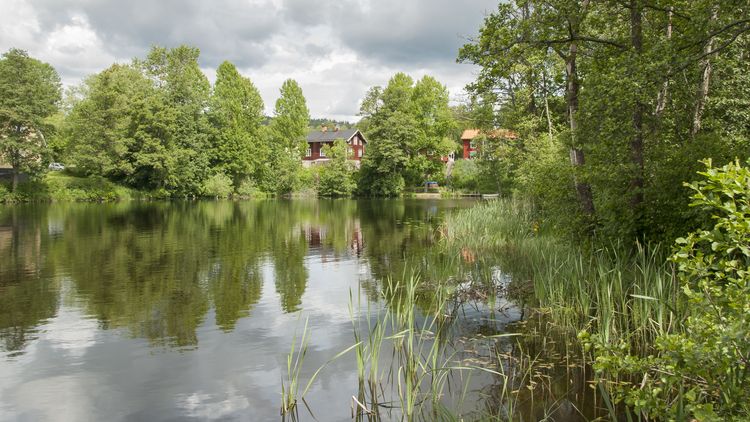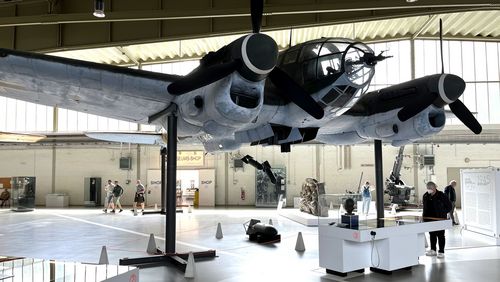Escaping hectic city life and fleeing to the countryside – industrialisation and urbanisation made this a tempting option for many intellectuals in the nineteenth century. Historian Thomas Etzemüller is researching how landscapes became projection surfaces for socio-political concepts in those times.
Heinrich Heine, Clemens Brentano, Robert Schumann, Richard Wagner – these famous figures of German culture and many others sung the praise of the Rhine in the nineteenth century. For them, the river and landscape stretching from Bonn to Bingen were more than just water, vineyards and castles. In their works they also dealt with national consciousness, Middle Ages romanticism and a longing for nature at a time when cities were growing and industry was developing rapidly.
The Rhine became a projection surface for socio-political concepts – a trend that could also be observed in other areas, for example the Swedish province of Dalarna. Thomas Etzemüller, Professor of Cultural History of Modernity at the University of Oldenburg, is studying these regions in his research. He calls them "imaginary landscapes".
Why "imaginary"? Etzemüller borrowed the term from Thomas O'Dell, a cultural scientist at Lund University in Sweden. "Most of us are probably aware of how we associate a landscape with certain memories or yearnings," Etzemüller explains. "'Imaginary Landscapes', however, reflect political programmes rather than individual ideas."
As industrialisation and urbanisation advanced in the nineteenth century, many bourgeois intellectuals came to see towns and large cities as symbols of social decay, misery and isolation. They were contrasted with the apparently unspoiled nature, which, according to the intellectuals, it was vital to reclaim.
A farm in the big city
Dalarna was a concrete example of this. As industrialisation advanced, this region in central Sweden with its mountains, lakes and rivers, its reindeer herders and farmers, became an increasingly popular travel destination for artists, writers and intellectuals. The renowned Swedish ethnologist Artur Hazelius travelled to the region in the 1870s, and was so fascinated by the landscape and culture that he had an entire farm transferred from Dalarna to the capital, Stockholm.
Here it was put on display at the famous “Skansen” open-air museum established by Hazelius in 1891. “He wanted to show the urban public what he considered to be the authentic Swedish way of life, and thus counter their supposed isolation and alienation from nature,” Etzemüller explains. The public was duly impressed: “Skansen” made Dalarna even more popular as a travel destination.
In Germany, it was the Middle Rhine, the area between Bonn and Bingen, which became a political projection surface or “imaginary landscape” from the late eighteenth century onwards – for several reasons. On the one hand the idea was to portray the Rhine as a quintessentially German river after the occupation of the Rhineland by the French as a result of the Napoleonic Wars at the end of the eighteenth century. On the other hand, many artists and authors of the German Romantic movement were enthusiastic about the Middle Ages, also in reaction to the contemporary phenomenon of urbanisation.
Just as in Sweden country life was pitted against city life, in Germany life in the Middle Ages was contrasted favourably with modernity. The Rhine and its many castles became a symbol of an enlightened era. “For Heinrich von Kleist, for example, the pre-industrial, undomesticated Rhine symbolised a peaceful life in harmony with nature,” Etzemüller notes. “In contrast to this he described a noisy, restless Paris which was harmful to people’s minds and bodies.” This enthusiasm for the Middle Ages is still visible in the landscape today: The Prussian ruling dynasty had many ruined castles along the Rhine reconstructed.
Traditions revived by tourism
Etzemüller has already published several essays on the subject, and a book is in the pipeline. In his research he includes not only the Rhine and Dalarna but also other landscapes such as the Sauerland, the English Lake District and the Pontine Marshes in Italy. He analyses travel guides as well as paintings, leaflets and printed panorama views of the Rhine for tourists. For tourism plays a key role in the history of “imaginary landscapes”.
More and more tourists made their way to Dalarna or the Rhine in search of the authenticity and unspoiled nature so highly praised by poets, painters and scientists. This was not without consequences: “In many cases traditions that were in decline were revived by this tourism,” says Etzemüller.
In Dalarna, local history societies were founded that preserved historically valuable farmsteads. Artists and writers from outside the region brought back to life old traditions that had almost died out. At the same time complaints about the tourists became more frequent. According to a Swedish travel guide from 1908, the “average tourist” saw Dalarna as an “extended Skansen” where everything was simply "for their amusement".
Local recreation instead of utopias
“These debates are reminiscent of today’s complaints about tourists who are constantly glued to their smartphones and taking photos instead of truly experiencing foreign cultures,” says Etzemüller. So the tourism and the debates it provokes continue – but what about imaginary landscapes? Do they still exist today?
Etzemüller is sceptical: true, some city dwellers still spend their holidays in the countryside. But the idea that society can be cured of its civilizational ills through contact with nature has disappeared since the middle of the twentieth century. And thus the perception of areas like Dalarna or the Rhine has also once again changed. They have gone from being symbols of socio-political utopias to being local recreation areas, holiday destinations and places of longing.




